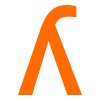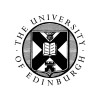
Effect of Daily Music Listening on Stroke Recovery
StrokeSingle blind randomized clinical trial including 50 stroke patients to investigate the effect of daily music listening on behavioral, neural and physiological recovery. Patients are randomized (1:1:1) to listen instrumental or vocal music, or audiobooks (recorded book reading) (control). Outcome measures are change in neuropsychological tests, change in self-reported mood, structural and functional magnetic resonance imaging changes and hormonal changes performed at acute, 3-month and 6-month stages.

An Exploratory Clinical Study on a Variable Speed and Sensing Treadmill System (VASST) for Hemiparetic...
StrokeHemiplegic GaitTo conduct a feasibility clinical trial to test a novel patient sensing automated treadmill device devised by local engineers for subacute hemiplegic stroke patients for gait rehabilitation. This is a phase 1 feasibility and safety trial on the above device for 10 chronic stroke patients with hemiparetic gait dysfunction to be conducted over a period of 2 months. Research protocol and standardized outcomes measures will be used.

Very Intensive Early Walking in Stroke
StrokeThe purpose of this study is to demonstrate the efficacy of intensive locomotor interventions early post stroke. An intensive locomotor training (LT) program will be compared to an active control, conventional physical therapy. It is proposed that an early and intensive stepping paradigm that is not typically employed early in physical therapy will lead to superior outcomes and improved community mobility. A randomized, blinded, controlled trial will test subjects with moderate to severe locomotor dysfunction in individuals post-stroke to compare walking-related outcomes after intensive gait training (including treadmill, overground, stair training, and skilled walking training) to outcomes after conventional physical therapy.

Dynamic Combination Therapy on Chinese Herbal Granules to Improve the Symptoms in Convalescent Phase...
Ischemic StrokeConvalescenceTo evaluate the effect of the dynamic combination therapy on Chinese herbal granule formula (Fangji) based on differentiation of syndromes ("Zhenghou") according to the theory of traditional Chinese medicine for improving the symptoms in the convalescent phase of ischemic stroke, and to establish the pharmacodynamic model of "Zhenghou" according to the results of this trial.

A Rehabilitation Therapy for Post-stroke Fatigue
StrokeStroke is a leading cause of adult disability in the community. Fatigue affects about a third of stroke survivors. It results in difficulty taking part in everyday activities, and increases risk of hospitalization and death after stroke. Despite of its high prevalence and distressing consequences, there is no effective treatment. Psychological interventions have improved fatigue in patients with other conditions such as multiple sclerosis. These interventions primarily target patients' beliefs about overcoming fatigue and their physical activities in daily life. Also studies indicated that post-stroke fatigue is associated with mood. Based on this knowledge, the investigator has designed a brief psychological intervention for post-stroke fatigue. The current study is a feasibility study to test the adequacy of intervention manuals and the feasibility of trial processes. This study will need 12 stroke survivors who have post-stroke fatigue and are over three months but within two years after their stroke. Stroke survivors with severe depression or having insufficient capability in cognition or communication will not be included. The investigator will check their eligibility by questionnaires and interviews and then invite eligible people to take part in the study. This intervention will be delivered by a therapist (a clinical psychologist) to each participant through six face-to-face therapy sessions. Each session will be about one hour and be two weeks' apart. During the sessions, participants will discuss with the therapist their fatigue problems, and, with the support from the therapist, work out ways to solve their problems. One month after the last face-to-face session, each participant will receive a feedback session by telephone from the therapist. Each participant will be followed up to three months after the last face-to-face session. After all participants complete their feedback sessions, the investigator will invite them to a group meeting to share their experiences of taking part in this trial and makes suggestions as how their experiences of this intervention, and also of this trial, could be improved.

Robot-assisted Training for Stroke Recovery
StrokeThe robot assisted therapy is one of the new developed technologies for recovery after stroke. This study aimed to evaluating the effect of robotic gait therapy for motor recovery after stroke.

THR-18's Pharmacokinetics and Pharmacodynamics in Subjects With Acute Ischemic Stroke Treated With...
StrokeAcuteThe purpose of this study is to test the experimental drug "THR-18" given together with the drug "tissue plasminogen activator" for the treatment of stroke. Tissue plasminogen activator is also called "tPA". Strokes often result from blockade of blood supply caused by blood clots forming within the blood vessel feeding the brain. Such strokes are called "Ischemic strokes". Treatment of these strokes is aimed at breaking up the blood clot(s) and renewing the blood flow before further parts of the brain die. Breaking up the blood clot is possible with the drug tPA when it is injected into a vein shortly after the stroke starts. However, along with breaking up the blood clot, tPA sometimes causes adverse effects, for example, it may cause bleeding. THR-18, the drug tested in this study, is meant to bind to tPA and reduce its adverse effects without stopping tPA's breaking up of the blocking blood clot. The primary purpose of this study is to evaluate the safety of THR-18 in acute ischemic stroke patients who are treated in parallel with tPA. Another purpose of this study is to investigate levels of THR-18 and tPA in the blood stream at different time points after they are injected, at the same time, into a vein. In addition, this study will measure tPA's effect on blood clot dissolution when tPA is given with and without THR-18. The study will also study the effect THR-18 may have on signals of brain damage that can be found in the blood after stroke: these signals of brain damage are small proteins called S100B and matrix metalloproteinase (MMP)-9. These proteins are released into the blood stream when the brain is injured. The safety evaluation of THR-18 in this study will be done in comparison to placebo. Placebo is a drug that looks exactly like THR-18 but has no activity. Three doses of THR-18 will be tested, one after the other, in three groups of patients. In each group, some patients will receive THR-18 and some will receive placebo. This clinical study will be conducted only at one hospital in the Ukraine. In total, 30 patients are planned to participate in this study. These patients will be in the hospital for at least 3 days after receiving the study treatment. Then, about 1 month later, they will be invited for a last follow-up visit.

High Intensity Interval Training in Chronic Stroke
StrokeThe objective of this study was to compare the effectiveness of high intensity interval training (HIT) and traditional aerobic training for persons with stroke.

Forearm Rotation Orthosis for Stroke
StrokeThe purpose of this study is to examine the efficacy of a forearm rotation orthosis combined with the occupational therapy task-oriented approach on functional performance for persons with a hemiparetic arm. Hypotheses of this study are: participants who wear the forearm rotation orthosis will demonstrate significantly greater improvement in functional performance and active range of motion of forearm rotators compared to those who do not; all participants who receive the occupational therapy task-oriented approach intervention will demonstrate significant improvement in functional performance; and all participants who receive the occupational therapy task-oriented approach intervention will demonstrate improvement in motor function of the upper extremity.

rTMS Study to Improve Functional Performance for Patients With Stroke
StrokeTo use repetitive transcranial magnetic stimulation (rTMS) to treat stroke patients is getting a popular idea. Previous studies seemed to support its effects on facilitating motor recovery after stroke. This study focuses on the motor recovery of lower extremities. Investigators conducted the study to evaluate the treatment effect of rTMS on the functional performance of lower extremities in terms of postural control, balance, and mobility in stroke patients. Investigators hypothesized that these performances could be improved through the better motor control of lower extremities caused by rTMS.
